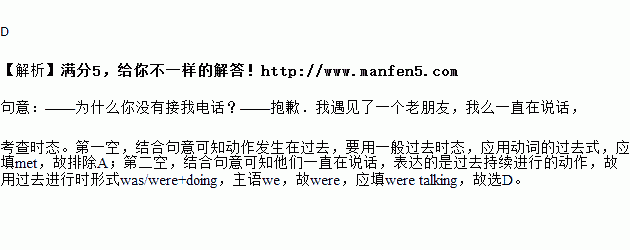题目内容
— Why didn't you answer my call?
— sorry. I _______ an old friend and we _______all the time.
A.have met; are talking B.met; talked C.met; are talking D.met; were talking
Guinness World Records Museum Welcome to the Guinness World Records Museum! Here you will be surprised to see many things beyond your imagination. Address: 329 Alamo Plaza, San Antonio, TX 78205 Opening Hours: From September to April: 10:00 am to 7:00 pm from Sunday to Thursday 10:00 am to 9:00 pm on Friday and Saturday From June to August: 10:00 am to 10:30 pm from Sunday to Thursday 10:00 am to 11:30 pm on Friday and Saturday Ticket Price: Adult: $ 14.95 for 2 attractions (景点); $ 18.95 for 4 attractions; $ 22. 95 for all attractions Child (4-12) : $ 8.95 for 2 attractions; $ 11.95 for 4 attractions; $14. 95 for all attractions ★ It is free for the old over 60! In the GWR Museum you can enter the different exhibition halls (展览厅). In each of these halls you can see many different kinds of world records. In some halls you are even given a chance to do something so that you can know better about how a record was set. If you feel tired, just come into the Rest Area, where you can either have a cup of coffee or have some delicious snacks. But please remember, never take your food or drinks into the exhibition halls. |
For more information, please contact (联系) us! Tel: 1-323-4636433 Website: http: //www. guinnessmuseumhollywood. com |
1.When can you visit the Guinness World Records Museum?
A.At 9 o’clock am in August on Friday. B.At 7 o’clock am in June on weekends.
C.At 8 o’clock pm in March on weekends. D.At 2 o’clock pm in December on weekends.
2.How much should an 8-year-old son and his mother pay to visit two attractions?
A.$ 8.95. B.$ 14.90. C.$ 23.90. D.$ 14.95.
3.What should you remember when you visit?
A.Never take food or drinks into the exhibition halls. B.Don’t do anything in the exhibition halls.
C.You can only enter a few exhibition halls to visit. D.There is no Rest Area in the museum.
4.What can we do in the exhibition halls?
A.We can have a cup of coffee. B.We can know better about how a record was set.
C.We can have some delicious snacks. D.We can set a new world record.


 B.
B. C.
C.
